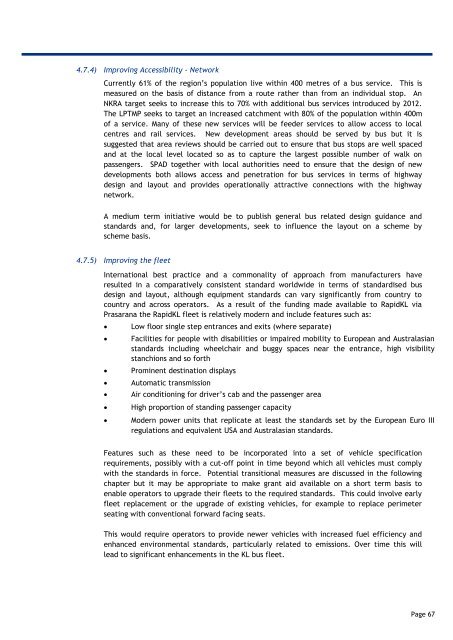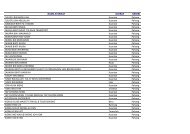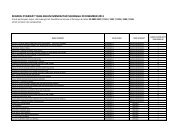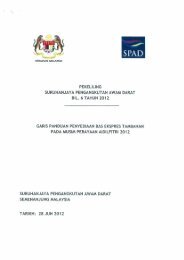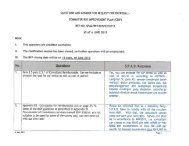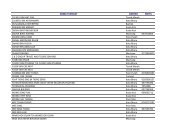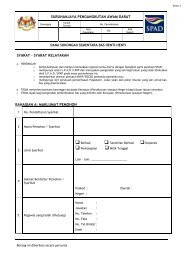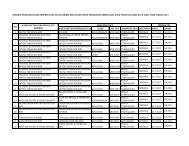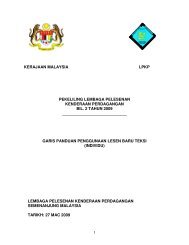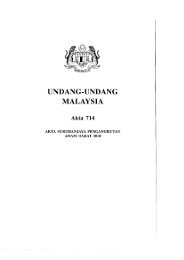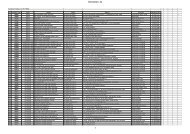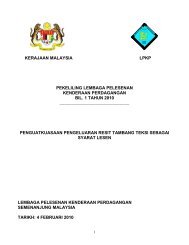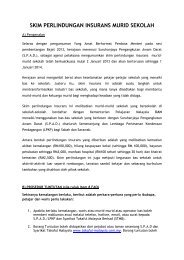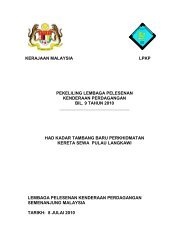Contents - SPAD
Contents - SPAD
Contents - SPAD
You also want an ePaper? Increase the reach of your titles
YUMPU automatically turns print PDFs into web optimized ePapers that Google loves.
4.7.4) Improving Accessibility - Network<br />
Currently 61% of the region‟s population live within 400 metres of a bus service. This is<br />
measured on the basis of distance from a route rather than from an individual stop. An<br />
NKRA target seeks to increase this to 70% with additional bus services introduced by 2012.<br />
The LPTMP seeks to target an increased catchment with 80% of the population within 400m<br />
of a service. Many of these new services will be feeder services to allow access to local<br />
centres and rail services. New development areas should be served by bus but it is<br />
suggested that area reviews should be carried out to ensure that bus stops are well spaced<br />
and at the local level located so as to capture the largest possible number of walk on<br />
passengers. <strong>SPAD</strong> together with local authorities need to ensure that the design of new<br />
developments both allows access and penetration for bus services in terms of highway<br />
design and layout and provides operationally attractive connections with the highway<br />
network.<br />
A medium term initiative would be to publish general bus related design guidance and<br />
standards and, for larger developments, seek to influence the layout on a scheme by<br />
scheme basis.<br />
4.7.5) Improving the fleet<br />
International best practice and a commonality of approach from manufacturers have<br />
resulted in a comparatively consistent standard worldwide in terms of standardised bus<br />
design and layout, although equipment standards can vary significantly from country to<br />
country and across operators. As a result of the funding made available to RapidKL via<br />
Prasarana the RapidKL fleet is relatively modern and include features such as:<br />
<br />
<br />
<br />
<br />
<br />
<br />
<br />
Low floor single step entrances and exits (where separate)<br />
Facilities for people with disabilities or impaired mobility to European and Australasian<br />
standards including wheelchair and buggy spaces near the entrance, high visibility<br />
stanchions and so forth<br />
Prominent destination displays<br />
Automatic transmission<br />
Air conditioning for driver‟s cab and the passenger area<br />
High proportion of standing passenger capacity<br />
Modern power units that replicate at least the standards set by the European Euro III<br />
regulations and equivalent USA and Australasian standards.<br />
Features such as these need to be incorporated into a set of vehicle specification<br />
requirements, possibly with a cut-off point in time beyond which all vehicles must comply<br />
with the standards in force. Potential transitional measures are discussed in the following<br />
chapter but it may be appropriate to make grant aid available on a short term basis to<br />
enable operators to upgrade their fleets to the required standards. This could involve early<br />
fleet replacement or the upgrade of existing vehicles, for example to replace perimeter<br />
seating with conventional forward facing seats.<br />
This would require operators to provide newer vehicles with increased fuel efficiency and<br />
enhanced environmental standards, particularly related to emissions. Over time this will<br />
lead to significant enhancements in the KL bus fleet.<br />
Page 67


